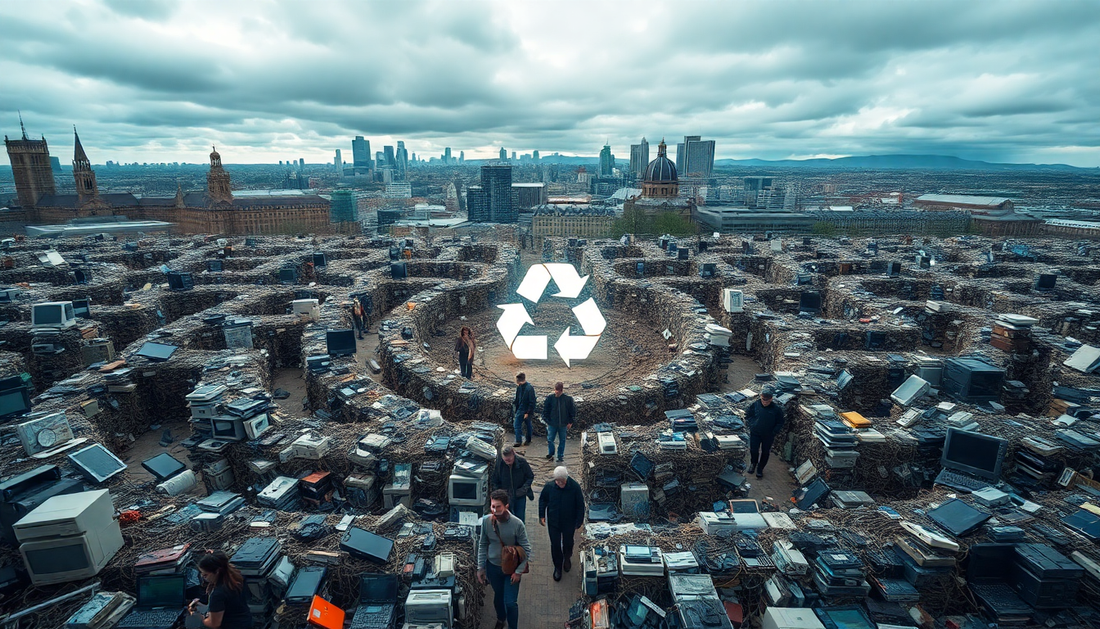In today's fast-paced, technology-driven world, we're constantly upgrading our electronic devices, from smartphones and laptops to kitchen appliances and power tools. But what happens to all those old gadgets and gizmos when we're done with them? Enter WEEE - the Waste Electrical and Electronic Equipment directive, a crucial piece of legislation that aims to tackle the growing problem of electronic waste.
WEEE, or Waste Electrical and Electronic Equipment, refers to any item with a plug, battery, or cord that has reached the end of its useful life. This includes everything from televisions and computers to vacuum cleaners and hair dryers. The importance of properly disposing of WEEE cannot be overstated. These items often contain hazardous materials like lead, mercury, and cadmium, which can have devastating effects on the environment if not handled correctly.
The WEEE Regulations in the UK
In the UK, the WEEE Regulations were first introduced in 2006 and have since been updated to ensure that manufacturers, retailers, and consumers all play a role in the responsible management of electronic waste. The regulations require producers to finance the collection, treatment, and recycling of WEEE, while retailers are obligated to provide take-back schemes for customers.
As a consumer, it's important to understand your responsibilities when it comes to WEEE. You're required to ensure that any old or broken electronic items are disposed of through authorized WEEE collection points, rather than simply throwing them in the bin. This helps to prevent these hazardous materials from ending up in landfills or being illegally exported to developing countries.
Finding WEEE Collection Points in the UK
Locating a WEEE collection point in your area can sometimes feel like navigating a maze, but there are several options available to help you dispose of your old electronics responsibly.
Local Council Recycling Centers
One of the easiest ways to get rid of WEEE is to take it to your local council recycling center. Most councils in the UK have designated areas for the collection and processing of electronic waste, and many will even offer collection services for larger items.
Retailer Take-Back Schemes
Many major retailers, such as Currys, John Lewis, and Argos, offer in-store or online take-back schemes for WEEE. When you purchase a new item, you can often arrange for the retailer to collect your old one at the same time, ensuring it's disposed of properly.
Online WEEE Locator Tools
If you're unsure of where to find your nearest WEEE collection point, there are several online tools that can help. This website below has a handy locator that allows you to search for your closest recycling center or retailer that accepts electronic waste.
https://www.recycleyourelectricals.org.uk/
The Benefits of Proper WEEE Disposal
Disposing of your electronic waste responsibly has a range of benefits, both for the environment and for the wider community.
Environmental Advantages
By ensuring that WEEE is properly recycled or reused, we can prevent the release of harmful substances into the air, water, and soil. This helps to protect local ecosystems and reduce the overall environmental impact of electronic waste.
Resource Conservation
Many of the materials used in electronic devices, such as metals and plastics, can be recovered and reused in the production of new products. This helps to conserve natural resources and reduce the demand for virgin raw materials.
Potential for Refurbishment and Reuse
In some cases, old electronic devices can be refurbished and resold, giving them a second lease on life. This not only reduces waste but also provides affordable access to technology for those who might not be able to afford brand-new items.
Tips for Responsible Electronic Waste Management
To help reduce the environmental impact of electronic waste, here are some tips for responsible WEEE management:
- Reduce Consumption: Before upgrading to a new device, consider whether your current one is still functioning well. If it is, try to extend its lifespan by repairing it or using it for as long as possible.
- Reuse and Donate: If your old device is still in good working condition, consider donating it to a local charity or community organization that can refurbish and redistribute it.
- Prepare for Recycling: When it's time to dispose of an electronic item, make sure to remove any personal data and accessories before taking it to a WEEE collection point. This helps to ensure the item is properly processed.
By following these simple steps, we can all play a part in reducing the environmental impact of electronic waste and creating a more sustainable future.
Conclusion
The WEEE directive is a crucial piece of legislation that aims to tackle the growing problem of electronic waste. By understanding your responsibilities as a consumer and taking the time to locate and use authorized WEEE collection points, you can help to protect the environment and conserve valuable resources.
So, the next time you're ready to upgrade your gadgets, remember: don't just toss them in the bin - find a WEEE collection point and do your part for a greener tomorrow.

